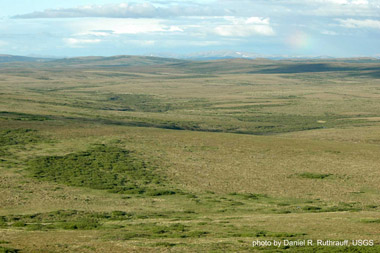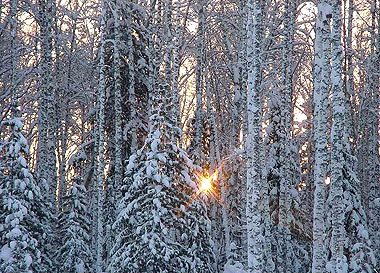Click on image for full size
Windows to the Universe
Biomes and Ecosystems
Biomes are large regions of the world with similar plants, animals, and other living things that are adapted to the climate and other conditions. Explore the links below to learn more about different biomes.
A biome is made of many similar ecosystems. An ecosystem is often much smaller than a biome, although the size varies.
Ecosystems are the interactions between the living things and the nonliving things in a place. In an ecosystem, the plants, animals, and other organisms rely on each other and on the physical environment – the soil, water, and nutrients, for example.
Even though they are living in the same place, each species in an ecosystem has its own role to play. This role is called a niche. The niche for one species might be to climb trees and eat their fruit, while the niche for another species might be to hunt for small rodents. For a tree, a niche might be to grow tall and make food with the Sun’s energy through the process of photosynthesis. If the niche of two species is very similar, they might compete for food or other resources.
Sometimes ecosystems get out of balance. If, for example, it rains a lot and a type of bird that thrives with extra water increases in numbers, other species in the ecosystem might be crowded out. The birds might take food or space or other resources from other species. They might eat all the food. Sometimes an ecosystem naturally gets back into balance. Other times an ecosystem will become more and more out of balance. Today, human actions are having an impact on ecosystems all over the world. Making buildings and roads, fishing and farming all have an impact on ecosystems. Pollution on land, air pollution, and water pollution is sending many ecosystems out of balance too.















